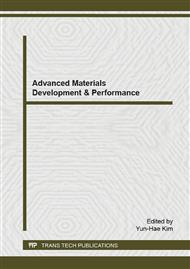p.3
p.7
p.13
p.19
p.23
p.27
p.32
p.36
Effect of Specimen Thickness on Fatigue Limit in Carbon Composites
Abstract:
The fracture behavior and fatigue limit in notched specimens of C/C composites were investigated. Also, the effect of specimen thickness on fatigue limit was discussed. Two plates of different thicknesses of plates of C/C composites using fine-woven carbon fiber laminates with α=0°/90° direction were used for testing. α is the angle between the carbon fiber direction and specimen axis. The crack growth behavior and failure mechanism of specimens are derived from the shear damage in the fiber bundle and matrix. Slits of several sizes were cut on both sides of a test section and different geometries of the specimens were prepared. Specimens with slits and blunt-notches were used to compare the fatigue strength. The fatigue limit is related to the method of making the plate of carbon composites. Large sizes of voids are observed in the case of specimens of thinner thickness. The fatigue limit was related to the void fraction, and thinner specimens showed a lower fatigue limit.
Info:
Periodical:
Pages:
13-18
Citation:
Online since:
June 2015
Keywords:
Price:
Сopyright:
© 2015 Trans Tech Publications Ltd. All Rights Reserved
Share:
Citation:


